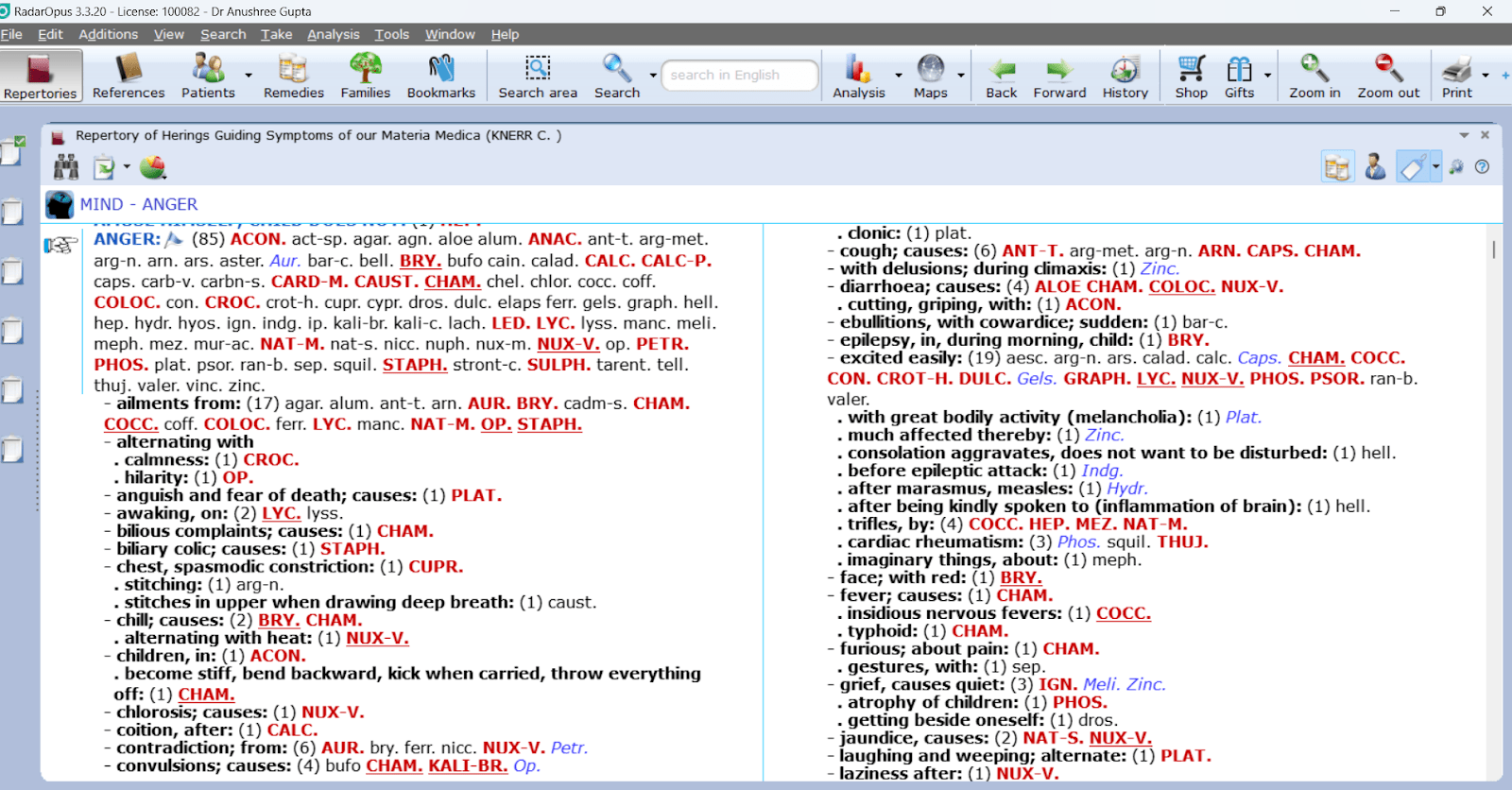Introduction to Knerr’s Repertory
Dr. Calvin Knerr spent 5 years compiling this concordance repertory as an index to Hering’s Guiding Symptoms. It was finally published in 1896.

Knerr’s Repertory has long since occupied a niche position in the discerning Homeopath’s toolkit. One of its USPs is that it combines pathogenic and clinical data and it even contains rubrics that cannot be located anywhere else in the literature.
It has a very difficult structure to become familiar with in comparison to the accessible layout of Kent’s repertory.
The RadarOpus version is the first to utilise the latest Sivaraman edition published by BJain which simplifies the chapter structure even more – reducing the number of chapters to 37 to follow Kent more closely. Therefore, the complexity and limitations of Knerr’s repertory now become hugely simplified through the powerful search functions built into RadarOpus.
Merits of Knerr’s Repertory
Let’s focus on why Knerr’s repertory stands out as an indispensable tool for homoeopathic professionals:
- Symptom Language: It uses language identical to that recorded during drug proving and cures.
- Wide Range of Symptoms: Knerr’s repertory boasts an extensive spectrum of symptoms, enhancing its clinical utility.
- Extra Sections: It covers additional chapters absent in other repertories, including Pregnancy, Parturition, Lactation; Heart, Pulse, and Circulation; Limbs in General; Nerves; Time; Attacks, Periodicity; Locality and Direction; Touch, Passive Motion, Injuries; and Stages of Life and Constitution.
- Authenticity: All rubrics are directly sourced from Hering’s Guiding Symptoms, ensuring reliability. Includes some additions not found in Hering, but based on further clinical findings.
- Temperature and Weather: Knerr’s includes valuable information on temperature, weather, stages of life, and constitution.
- Pathological Rubrics: It features numerous pathological rubrics indicating remedy affinities.
- Additions to Kent’s Repertory: Knerr’s allows you to supplement Kent’s repertory when justified, aiding in the selection of remedies for specific symptoms.
- Repertory of Cured Symptoms: Knerr’s repertory focuses on cured symptoms, enhancing its practicality.
- Clinical Repertory: It can serve as a clinical repertory, providing extensive information on pathological and diagnostic names.
- Mix of Pathogenic and Clinical Data: Knerr’s includes both pathogenic and clinical data, with several unique rubrics not found elsewhere.
Here are some practical tips and tricks for incorporating Knerr’s Repertory into your practice with Radaropus software
- Quickly Search desired symptoms, pathologies, or conditions.
- Search for ‘As If’ Language to discover subjective symptoms derived from provers’ and patients’ language.

- Explore temperament or constitution-related rubrics.

- Search for organ or tissue affinities.
- Search for clinical rubrics alongside the mental and physical particulars

- View the full list of SRP symptoms for a specific remedy.
- Search for words ending in *itis or *gia.
- Utilise F6 to build larger, all-encompassing rubrics. Tick ‘Take all sub-rubrics’ for a consolidated view.








